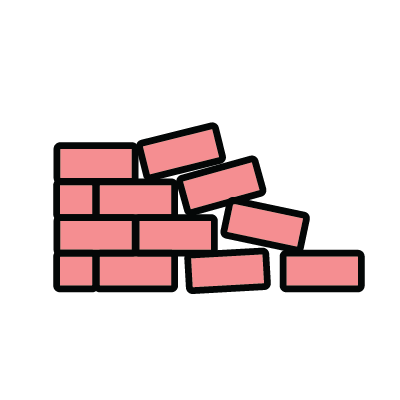
Clean rubble, or non-polluted rubble, often consists of stone and concrete. Examples of rubble are bricks, masonry, gravel, natural stone, ceramic material, paving stones, roof tiles and tiles.
You can hand this in at the waste recycling point. Rubble must be clean upon presentation. This means that it cannot be contaminated with other materials or (hazardous) waste. For example, if rubble is contaminated with sand, it no longer qualifies as rubble but as composite construction and demolition waste.

What happens to the waste?
After collection, rubble waste is ground and can be used in construction projects and for road construction.

What qualifies as (clean) rubble?
Yes
- Paving stones
- Concrete (also reinforced)
- Natural stone
- Lime sandstone
- (Paving) slabs
- Ceramic material
- Porcelain sanitary ware
- Masonry (if cured)
No
- Rubble with soot
- Insulation material
- Gypsum or aerated concrete
- Tar-debris
- Roofing waste
- Gravel
- Soil/sand
Always up to date on your waste collection!
In the Cure Afval app, you can see when and what kind of waste is collected in your neighbourhood, and you can automatically receive a notification when the waste is collected. You can also consult the waste calendar online on www.mijnafvalwijzer.nl.






